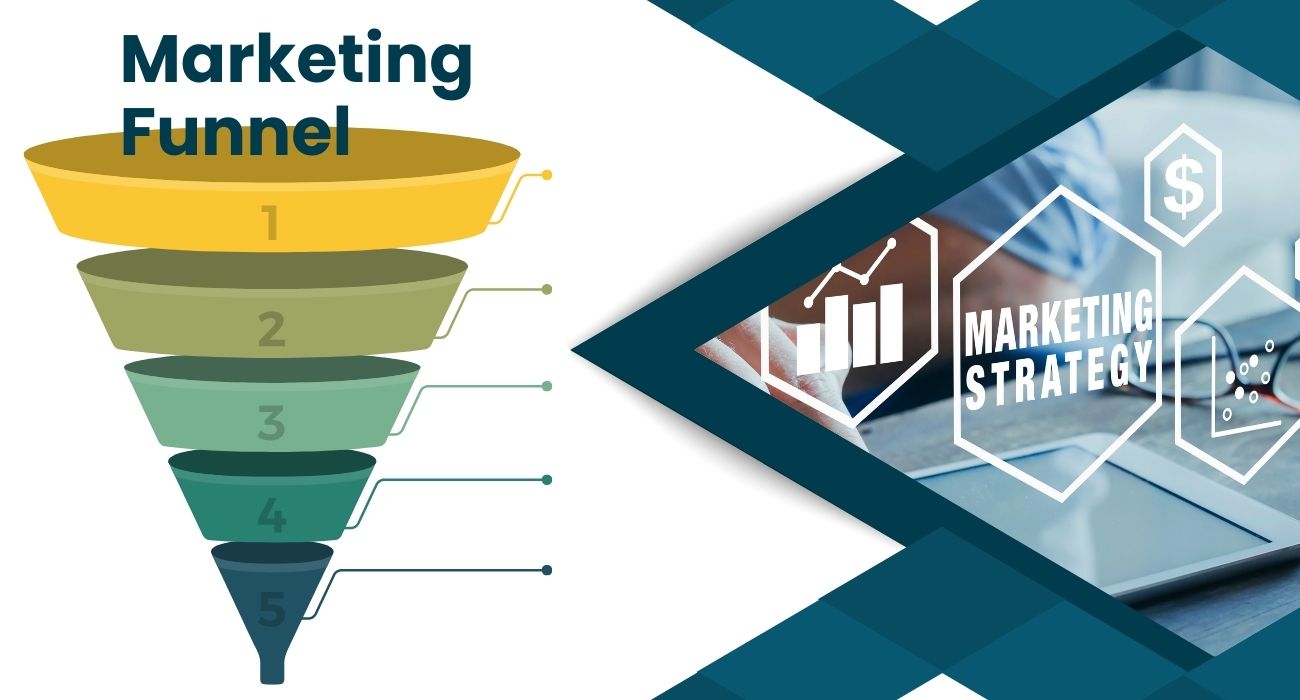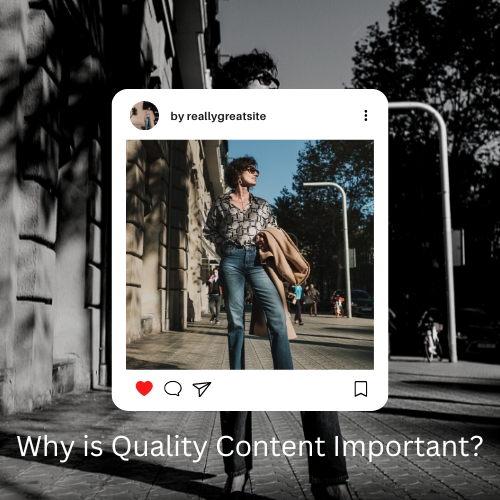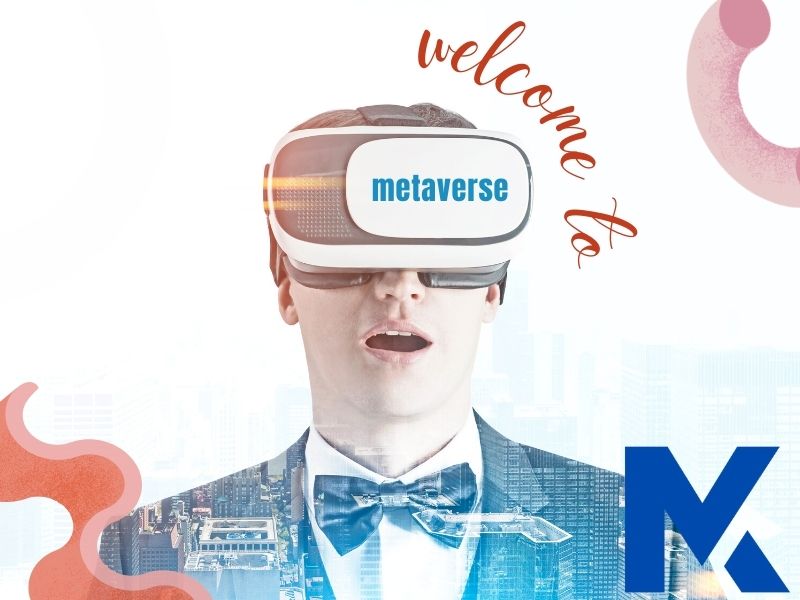Fostering business growth in today’s digital era requires savvy strategies and tools that streamline the path a consumer takes from first glance to final purchase. The digital marketing funnel stands at the forefront as a pivotal mechanism for achieving this, driving high-quality leads through a journey that has been meticulously crafted to encourage conversion and retention. A robust sales funnel is the arsenal every marketer needs to turn prospects into profits.
Understanding your online marketing funnel from top to bottom allows you to fine-tune the touchpoints that matter most, ensuring that each interaction nudges the customer closer to the decision-making apex. But what does it take to engineer a conversion funnel that not only captures attention but also capitalizes on it? It all boils down to marketing funnel optimization – a systematic approach to enhancing each phase, from awareness through to action, and beyond.
Merging the analytical with the creative, the journey of optimizing your digital marketing funnel has the power to transform the way your business reaches and resonates with its audience. Stay with us as we delve into the essence of funnel dynamics and reveal how to maximize your sales process for unparalleled return on investment.
Understanding the Basics of a Digital Marketing Funnel
As the digital landscape continues to evolve, grasping the fundamentals of a digital marketing funnel is crucial for any marketer looking to nurture leads effectively and maximize conversions. This structured approach to customer acquisition and engagement isn’t just about making a sale; it’s a comprehensive strategy encompassing every touchpoint in a customer’s journey from their first interaction with your brand to their post-purchase experiences and beyond.
The Importance of the Funnel in Online Marketing
In the realm of online marketing, a well-defined funnel marketing strategy is indispensable. It facilitates the smooth transition of potential leads from initial awareness right through to the decision and action stages. By understanding and optimizing these phases of the marketing funnel, businesses can attract more qualified prospects, foster better customer relationships, and enhance overall sales.
Key Components of an Effective Marketing Funnel
At its core, an effective marketing funnel integrates several elements designed to move a prospect along the journey. Lead magnets capture interest, landing pages focus the message and present a clear value proposition, and powerful calls-to-action (CTAs) prompt immediate responses. Together, these components play a pivotal role in converting passersby into leads and, eventually, loyal customers.
- Lead Magnets: Entice visitors with valuable resources in exchange for their contact information.
- Landing Pages: Tailored pages that deliver a focused message and guide users towards a specific action.
- CTAs: Persuasive prompts that encourage users to take the next step, whether it’s subscribing, purchasing, or another key conversion goal.
Marketing Funnel Stages Explained
Each stage of the marketing funnel represents a step in the customer’s journey, starting with awareness and culminating in advocacy. It is through careful customer journey mapping that businesses can design touchpoints corresponding to the marketing funnel stages, ensuring each interaction propels the potential customer closer to making a purchase and remaining engaged with the brand.
- Awareness: Where prospects first learn about your business.
- Interest: Potential customers show interest by engaging with your content or following your brand on social media.
- Consideration: Leads are nurtured through more detailed information, such as case studies or webinars.
- Intent: Expressions of clear intent to purchase, often through actions like product demo requests.
- Evaluation: The decision-making phase, where the value proposition is weighed against competitors.
- Purchase: The actual transaction takes place, converting the prospect into a customer.
By mastering these stages and the strategies associated with them, organizations can craft a funnel that not only attracts but also retains customers, turning them into brand ambassadors. This sequence is the backbone of a successful digital marketing approach, which, when properly implemented, can dramatically improve the bottom line.
Mapping the Customer Journey for Better Engagement
Understanding the intricacies of customer journey mapping is a cornerstone of any effective marketing strategy. This process involves visualizing and analyzing how potential clients interact with your brand, from the initial stage of becoming aware of your products or services to the final decision to make a purchase. A thoroughly mapped customer journey can provide invaluable insights into customer needs and behaviors, which, in turn, significantly enhance marketing strategies for both B2B sales lead generation and direct consumer sales.
In the realm of B2B sales, the ability to generate high-quality leads is tightly linked to how well a company comprehends and caters to the complex decision-making process of businesses. Different from B2C, B2B sales involve longer sales cycles and multiple stakeholders, making detailed customer journey maps essential for identifying key touchpoints and nurturing leads effectively.
Focusing on measuring brand awareness is critical, as it marks the beginning of the customer’s journey. Brands must implement tools and techniques to assess how widely their brand is recognized within the target market. This measurement not only fuels the fine-tuning of marketing campaigns for greater reach but also sharpens the focus toward engaging with high-potential leads that could be nurtured through the sales funnel.
- Identify the various stages of your customer’s journey
- Gather data points at each stage through tracking and analysis tools
- Analyze customer interactions to pinpoint areas needing improvement
- Customize content and marketing efforts based on customer data insights
- Continuously iterate and refine journey maps as you gather more data
To truly resonate with a business audience, a marketer must offer tailored content that speaks to industry-specific challenges and pain points. By combining the insights gathered from journey mapping with personalized and targeted marketing efforts, brands can create a strong affinity with their target demographic, thereby making the journey feel more intuitive and natural for the customers they are trying to reach.
“Mapping the customer journey provides the blueprint for an exceptional customer experience. It enables businesses to anticipate customer needs and tailor interactions that resonate deeply.”
In conclusion, the diligent process of customer journey mapping is more than a tactic—it’s an ongoing commitment to better engagement, more precise marketing, and a dedication to continuous learning about your customers and how they relate to your brand. Whether for B2B sales lead generation or measuring brand awareness, the strategic insights gained through this approach can lead to more effective engagement and, ultimately, increased sales and customer loyalty.
Strategies for Improving Your Funnel Marketing Automation
As the digital landscape evolves, having an ironclad funnel marketing automation strategy is paramount. Automation doesn’t just save time; it ensures that each contact with a prospective customer is timely, personalized, and efficient, progressing them through the lead generation funnel towards conversion. Leveraging the right technologies and approaches can significantly streamline operations and bolster marketing efforts.
Implementing Automation for Each Stage of the Funnel
To ensure that no potential lead falls through the cracks, it’s crucial to deploy automation across every funnel stage. From initial engagement with automated content delivery to post-sale follow-up sequences, each touchpoint can be enhanced with smart, responsive automation that nurtures leads even when you’re not actively monitoring the pipeline.
Tools and Software for Funnel Marketing Efficiency
There is a myriad of tools available that can facilitate funnel marketing automation. Whether it’s CRM (Customer Relationship Management) systems, email marketing platforms, or analytics tools, integrating these solutions can help marketers deliver targeted content, score and qualify leads, and track the progress within the marketing funnel.
Personalization and Segmentation in Automation
Marketing funnel optimization isn’t just about sending out more messages—it’s about sending the right message to the right person at the right time. This means using data to personalize communication and segmenting your audience so that the automation tools can deliver customized messages, tailored to the specific needs and behaviors of different user groups.
- Automation should align with the buyer’s journey stages to enhance lead nurturing.
- Choose a platform that integrates seamlessly with other tools and offers scalability as your business grows.
- Utilize segmentation to refine your messages for different audience demographics and behaviors.
- Analyze results regularly to keep optimizing for better engagement and conversion rates.
Crafting a Funnel Marketing Strategy That Converts Leads
A robust funnel marketing strategy is pivotal in transforming prospects into loyal customers. This strategy is not a one-time setup but a dynamic process that continually adapts to optimize conversion rates at each stage of the conversion funnel. So, how can businesses boost lead conversion effectively? The following approaches can help guide your leads to a successful sale.
An essential step in this strategy is understanding where in the funnel your potential customers drop off and reinforcing those areas. For instance, if the drop-off occurs at the interest stage, reconsider your engagement tactics. Maybe you need more informative content or a stronger call-to-action. Here’s what to consider at each stage:
- Attracting Leads: Utilize content marketing, SEO, and social media advertising to capture the attention of potential customers.
- Engagement: Once their attention is captured, engage them with intriguing and valuable content that addresses their needs and questions.
- Conversion: Use persuasive call-to-actions and offer incentives to encourage the leap from interested audience to customer.
- Rewarding Loyalty: Deploy exclusive offers and loyalty programs to keep your customers returning, thereby enhancing customer retention metrics.
Another element in refining the conversion process is customer retention metrics. These metrics provide insight into customer satisfaction and loyalty, crucial elements for maintaining sales momentum and encouraging repeat business. By analyzing these metrics regularly, you can spot trends, predict behaviors, and identify areas for improvement. Metrics like customer lifetime value (CLV), repeat purchase rate, and net promoter score (NPS) can give a clear picture of retention efforts.
“The aim of marketing is to know and understand the customer so well the product or service fits him and sells itself.” – Peter Drucker
Remember, a funnel marketing strategy that yields an uptick in conversion rates doesn’t just happen by chance; it is the result of meticulous planning, testing, and constant refinement. By integrating these tactics steadily into your funnels, you’ll witness not just an increase in lead conversions, but also a more profound customer connectivity that will foster a stable business growth.
Conclusion
In the realm of digital commerce, underpinning the vast array of techniques and strategies available, lies the undeniable effectiveness of a meticulously optimized digital marketing funnel. This final stretch of our guide aims to encapsulate the essence of our discussions and the actionable insights shared throughout. The focal point of this conclusive section orbits around the pivotal concept of marketing funnel optimization and its intrinsic value in sculpting the pathway to improved sales performance.
Measuring Success in Your Digital Marketing Funnel
The efficacy of a lead generation funnel can be gauged through diligently selected metrics and KPIs that offer a clear-cut reflection of performance across various stages. Customer retention metrics serve not only as indicators of immediate success but also as harbingers of long-term sustainability. By scrutinizing these metrics, businesses gain illuminated insights into customer behaviors and preferences, enabling them to fine-tune their strategies for heightened engagement and conversion.
Key Takeaways for Optimizing Sales with Your Funnel
Central to elevating sales is the harmonization of individual funnel components into one coherent strategy that ushers potential customers seamlessly from awareness to, ideally, brand evangelism. The synergy between enticing lead magnets, user-friendly landing pages, compelling CTAs, and personalized customer journeys contributes to a sturdy and dynamic marketing funnel—one that not only captivates prospects but also converts them with impressive regularity. Employ these takeaways as your compass for crafting a marketing roadmap that resonates with your target audience and amplifies your sales trajectory.
Future Trends in Funnel Marketing
Peering into the future, we foresee a marketing landscape where AI and machine learning stand at the vanguard, ceaselessly innovating and propelling the boundaries of what’s possible in funnel marketing. The sagacity with which these technologies can predict consumer behavior and curate highly targeted content is set to revolutionize how businesses approach lead nurturing and sales conversions. Coupled with the unyielding evolution of consumer expectations, it’s clear that agility and adaptability will be the cornerstones of success in funnel marketing strategies in the years to come.
FAQ
What is a Digital Marketing Funnel?
A digital marketing funnel is a model that represents the customer journey from the initial stages of awareness about a product or service to the final stage of making a purchase. It’s designed to guide potential customers through a series of marketing actions leading to a conversion.
Why is the Funnel Important in Online Marketing?
The funnel is important because it provides a structured approach for nurturing leads and guiding them towards making a purchase. It helps businesses understand and cater to customers’ needs at each stage of their buying journey, increasing the chances of sales and enhancing customer engagement.
What Are the Key Components of an Effective Marketing Funnel?
Key components of an effective marketing funnel include lead magnets, landing pages, email campaigns, calls-to-action (CTAs), and nurturing sequences. These elements work together to attract, engage, and convert prospects into customers.
Can You Explain the Stages of the Marketing Funnel?
The marketing funnel stages typically include Awareness (when prospects learn about a product or service), Interest (when they show curiosity and seek more information), Desire (when they evaluate the offering against their needs), and Action (when they make a purchase decision). After the purchase, there’s the Retention stage, where the focus shifts to turning customers into repeat buyers and advocates for the brand.
How Does Customer Journey Mapping Improve Engagement?
By mapping the customer journey, businesses can gain insights into the customer’s experience, expectations, and pain points at each stage of the funnel. This understanding allows companies to tailor their marketing strategies and create more targeted, relevant, and personalized experiences that boost engagement and drive conversions.
What Role Does Automation Play in Funnel Marketing?
Automation streamlines repetitive tasks and processes in the marketing funnel, allowing businesses to engage with customers in a timely and efficient manner. From lead nurturing emails to personalized product recommendations, automation helps maintain a consistent and relevant dialogue with prospects, moving them closer to a purchase.
What Tools Can Be Used for Funnel Marketing Efficiency?
Tools for funnel marketing efficiency include CRM systems, email marketing software, analytics platforms, and lead management solutions. These systems help with automating communications, segmenting audiences, tracking progress through the funnel, and effectively managing and nurturing leads.
Why Is Personalization Important in Funnel Marketing Automation?
Personalization enhances the effectiveness of automation by ensuring that the marketing messages and offers are relevant to the individual customer’s needs and preferences. This tailored approach can significantly increase engagement, improve customer experience and lead to higher conversion rates.
How Can a Business Craft a Funnel Marketing Strategy That Converts?
A business can craft a funnel marketing strategy that converts by understanding their audience, creating compelling content, utilizing data to personalize interactions, optimizing each stage of the funnel for conversions, and continually testing and refining the strategy based on performance data and customer feedback.
What Metrics Should be Used to Measure the Success of a Digital Marketing Funnel?
Metrics that can be used to measure the success of a digital marketing funnel include conversion rates, click-through rates, bounce rates, lead acquisition costs, customer lifetime value, sales revenue, and customer retention metrics. These KPIs help businesses track performance and identify areas for improvement.










